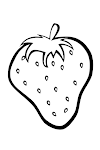Creating a detailed pencil sketch of a girl involves various steps, each contributing to the overall character and expression of the drawing. In this extensive guide, I'll break down the process into manageable steps, providing explanations and tips along the way.

Stage 1: Readiness and Materials Before you begin painting, ensure you have the right materials. You want a quality sketch cushion, a bunch of brushes of various hardness (from 2H to 6B), an eraser, and a concealing pen. Track down a sufficiently bright and agreeable workspace. Stage 2: Fundamental shapes and extents To start with, the light is driven by the head. Add an upward line in the middle and an even line in the center to situate the eyes. Utilize these lines to change the balance and extent of the face. Recall that the eyes are as a rule about the width of one eye separated. Stage 3: face Place the eyes as per an even line, attracting them to the state of an almond. Add a nose under the eyes and a mouth under the nose. At this stage, they care for the subtleties, giving specific consideration to the situation and higher figures. Stage 4: Hairline and Style Draw a hairline and decide the hairdo you need for your young lady. Think about the stream and bearing of the hair. Hair can add character and development to a stretch. Stage 5: Tell the countenances Cautiously shape the face, involving the fundamental shapes as an aide. Focus on the bends of the cheeks, facial structure, and jaw. You ought to have delicate and smooth elements, particularly with a ladylike face. Stage 6: Adding Eye Subtleties Purge the eyes all the more completely. Add understudies, hair, and eyelashes. Take as much time as is needed to press your eyes. They are much of the time thought about the focal point of the picture. Stage 7: honing the nose and mouth Add more nose and mouth. Mix delicately to make a feeling of volume and shape. Remember that artfulness functions admirably on scale diagrams. Stage 8: The ears are finished Ears on the two sides of the head. The ears are generally positioned from the eyebrow towards the lower part of the nose. Focus on their shape and size. Stage 9: Working the neck and subtleties of the piece of clothing Draw the neck and add each piece of clothing. Whether it's a scarf, a neckerchief, or a scarf, these subtleties will make your outfit look great. Think about the kind and surface of the dress. Stage 10: Hair Subtleties and Surface By adding hairs, you can refine your inquiry. Focus on the course of the hair strands and utilize the combination to make volume. Hair can be an incredible chance for innovativeness and self-articulation. Check out at the surface and length of the hair. Stage 11: Shades and shadows The start of the shades of the different pieces of the face and hair. Use tone or cross-avoidance strategies to make shadows and profundity. Consider the heading of the light source to figure out where the shadows fall. Focus on the normal shapes of the face and use tones to accentuate them. Stage 12: Statement and conclusion of subtleties Keep on refining your structure by adding any extra subtleties that you want. Change the face, hair, and garments until you are content with the general look. Contemplate the articulation you need to appropriately convey and change the subtleties. Stage 13: Foundation and Works Conclude whether you need to incorporate a gathering or a climate. You can keep it straightforward or add components that supplement your plan. Ponder the style you need to convey all through your vocation. Stage 14: Survey and Changes Make a stride back and survey your record. Distinguish regions that need change or improvement. Actually look at the extents, facial highlights and generally speaking equilibrium of the drawing. Make any important remedies. Stage 15: Last Contacts and Mark Add a hand to build your draw. Think about featuring specific regions for added accentuation. Whenever you are happy with the substance of the lead, you can sign your work. Your mark is the individual touch that denotes the fulfillment of your work. Keep in mind, that making a point-by-point lead is a cycle that requires persistence and practice. Try different things with various styles, strategies, and articulations to foster your one-of-a-kind creative voice. Partake in the imaginative excursion of rejuvenating your young lady lead.
source: cat drawing







0 Comments